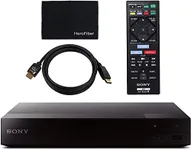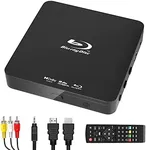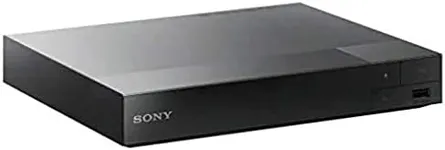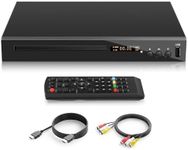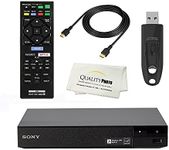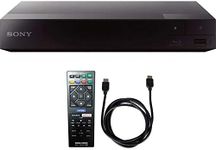Buying Guide for the Best Blu Ray Players
When choosing a Blu-ray player, it's important to consider several key specifications to ensure you get the best fit for your needs. Blu-ray players can vary widely in terms of features, performance, and compatibility, so understanding these specs will help you make an informed decision. Think about what you want to use the player for, such as watching movies, streaming content, or playing music, and let that guide your choices.ResolutionResolution refers to the clarity and detail of the video output. The most common resolutions are 1080p (Full HD) and 4K (Ultra HD). Full HD is sufficient for most users and provides excellent picture quality. However, if you have a 4K TV and want the best possible picture quality, a 4K Blu-ray player is the way to go. Consider your TV's resolution and your desire for high-definition content when making your choice.
HDR SupportHDR (High Dynamic Range) enhances the contrast and color range of the video, providing a more vibrant and realistic picture. There are different HDR formats like HDR10, Dolby Vision, and HDR10+. If you have an HDR-compatible TV, choosing a Blu-ray player that supports HDR can significantly improve your viewing experience. Check your TV's specifications to see which HDR formats it supports and choose a player that matches.
Audio FormatsBlu-ray players can support various audio formats, such as Dolby TrueHD, DTS-HD Master Audio, and Dolby Atmos. These formats provide high-quality, immersive sound. If you have a home theater system or a soundbar that supports these formats, selecting a Blu-ray player with compatible audio support will enhance your audio experience. Consider your audio setup and the importance of sound quality in your viewing experience.
Streaming ServicesMany Blu-ray players come with built-in apps for streaming services like Netflix, Amazon Prime Video, and Hulu. If you plan to use your Blu-ray player for streaming content in addition to playing discs, look for a model that supports your favorite streaming services. This can save you from needing a separate streaming device and provide a more integrated entertainment experience.
ConnectivityConnectivity options include HDMI outputs, USB ports, and Wi-Fi or Ethernet for internet access. HDMI is essential for connecting to your TV, while USB ports allow you to play media from external drives. Wi-Fi or Ethernet is necessary for streaming and firmware updates. Consider how you plan to connect your Blu-ray player to your TV and other devices, and choose a model with the appropriate connectivity options.
Disc CompatibilityBlu-ray players can play various disc formats, including standard Blu-ray discs, DVDs, and CDs. Some models also support 3D Blu-ray discs and Ultra HD Blu-ray discs. If you have a collection of different types of discs, ensure the player you choose is compatible with all of them. This will allow you to enjoy your entire media library without needing multiple devices.
User Interface and Ease of UseA user-friendly interface makes it easier to navigate menus, access features, and adjust settings. Look for a Blu-ray player with an intuitive and responsive interface. Reading user reviews can provide insights into the ease of use of different models. If you prefer a straightforward, hassle-free experience, prioritize models known for their simplicity and ease of use.


